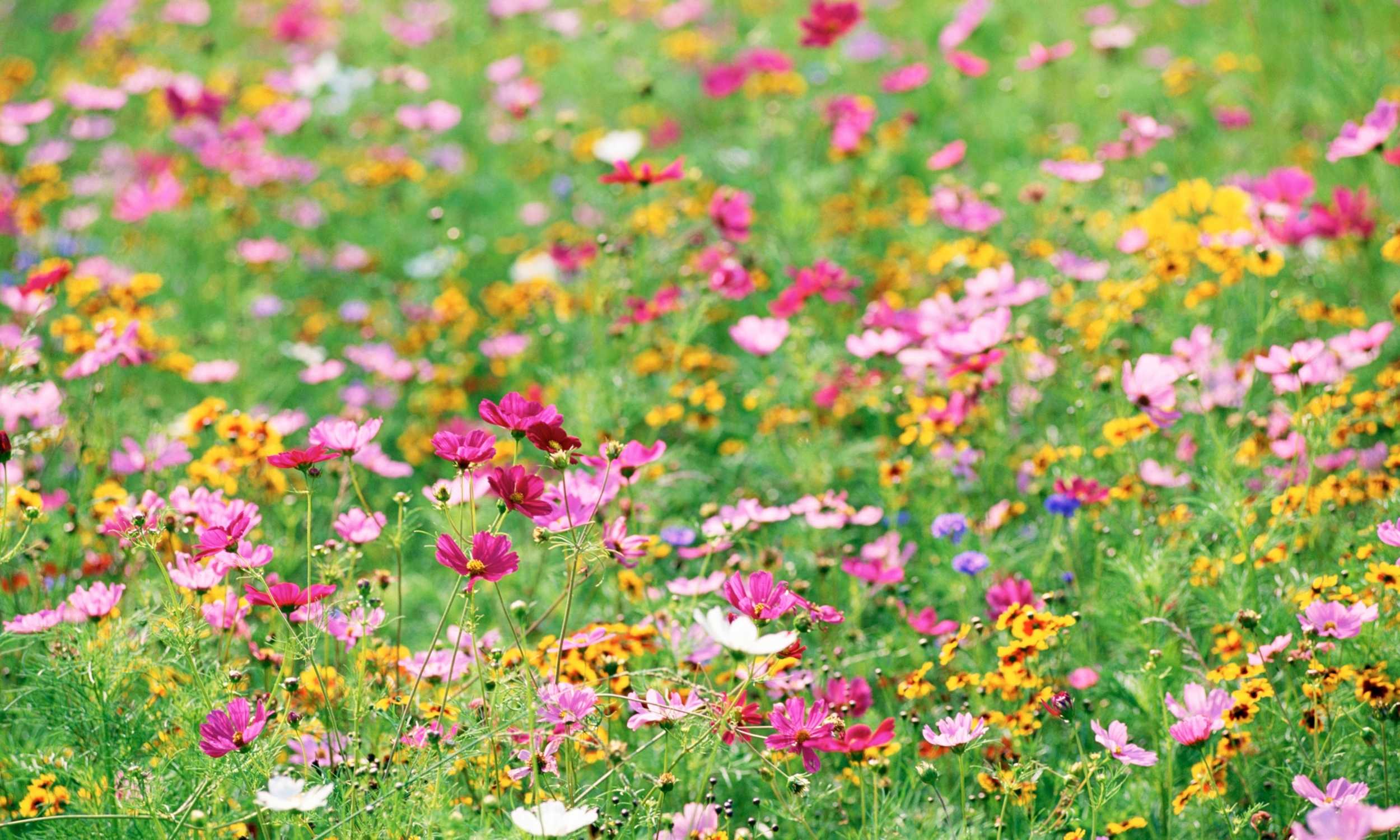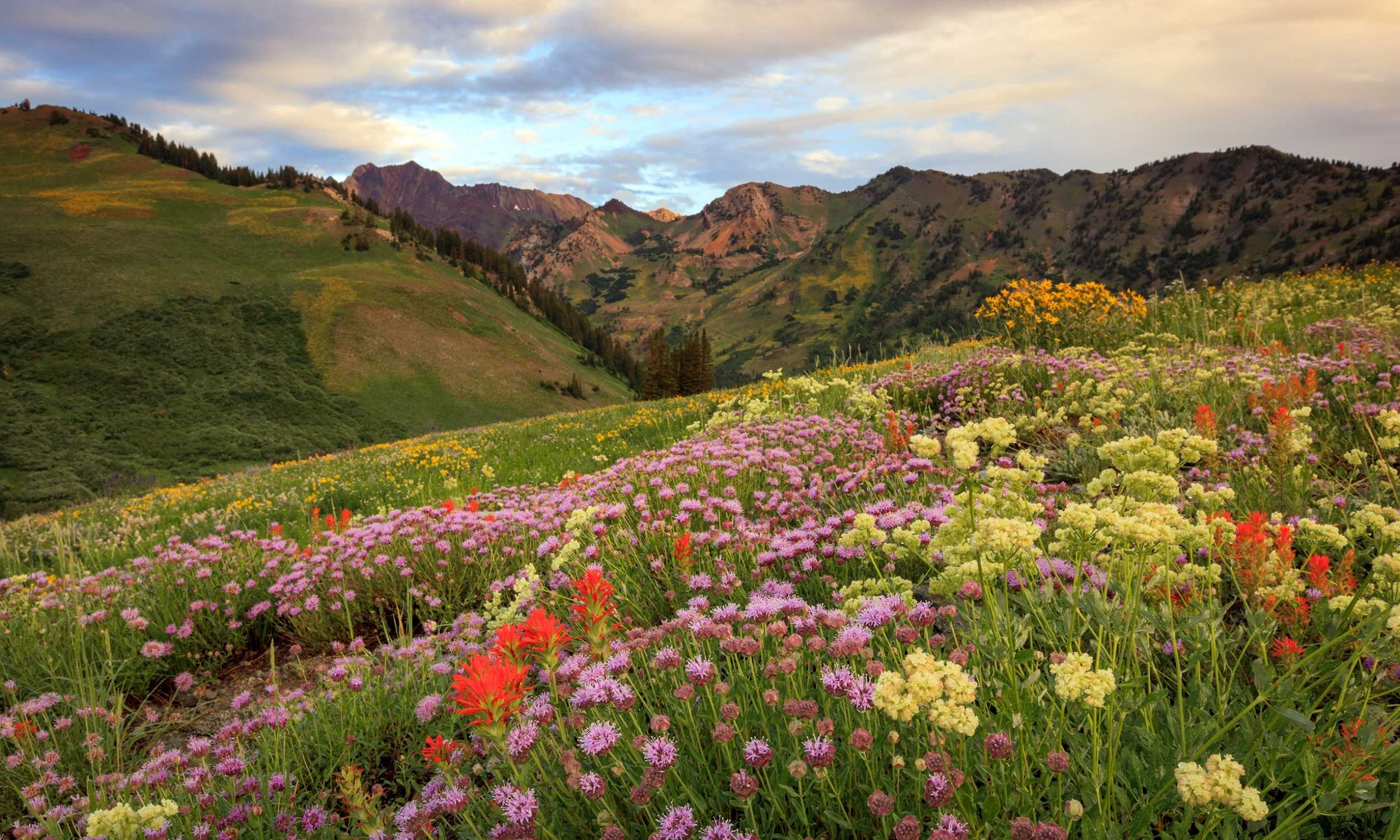How to Plant a Wildflower Garden
If you are looking to attract more pollinators to your garden I would highly suggest planting wildflowers. They will not only provide food and shelter for pollinators but they will also add some color to your yard. With a bit of planning and careful consideration can produce a gorgeous, colorful flower garden filled with plants that support local wildlife. Keep reading to learn How to Plant a Wildflower Garden.
Disclosure: Some of the links below are affiliate links, meaning, at no additional cost to you, I will earn a commission if you click through and make a purchase.

What is a Wildflower Garden?
Wildflowers are species of flowers that have shown themselves to be hardy and self-reproducing, with little attention from the gardener.1 Although they will grow wild on their own, they are not necessarily native plants. Wildflower gardens are considered a low-cost alternative to high-maintenance gardening. Many wildflowers prefer poor soil and neglect, making them ideal for tough to maintain areas of your property.
7 Things to Consider When Planting a Wildflower Garden
You Need Full Sun
You’ll need plenty of sunshine to cultivate a thriving wildflower garden. While some blooms can tolerate partial shade, the majority need full sun conditions. Don’t assume that just because a spot is sunny in the morning, it’ll be bright in the afternoon (and vice-versa). Use a light sensor to measure brightness throughout the day. Alternately, on a sunny day, take notes about how much light is falling on each area of the garden. Depending on the season, remember that nearby trees may provide more shade when their leaves return during the warmer months.
Opt for Native Seeds or Plants
When planting a wildflower garden, it’s tempting to opt for showy, exotic varieties. However, many blooms won’t thrive outside of their native climate. Some may even become invasive. Stick to plants that fit your USDA Hardiness Zone. When in doubt, ask seed sellers or nursery workers for recommendations. When starting, choose varieties that are easy to grow. Annuals like zinnias and marigolds produce long-lasting blooms and aren’t difficult to start from seed. Invest money in perennial plants that will return year after year.

You’re Better off Getting Ready in the Fall.
Preparing the garden in advance will save you precious time in the spring. If the beds are ready, you can jump to planting straight away. In the fall, remove any weeds from the desired planting area. Some will invariably come back but culling them now ensures wildflowers have a better chance of competing against weedy growth. Till the soil to remove clumps, amend the soil with compost, and cover the area with plastic mulch, cardboard, or whatever else is on hand. This preparation in the autumn will prevent weeds from coming up in the spring.
You Can Plant in the Fall and Spring
Sow annual wildflowers in the spring by scattering them and covering them lightly with soil. You can also seed in the fall, but there’s a higher chance that wildlife will find and munch on the seeds. Some flower seeds must be planted in the fall because they need to undergo a period of vernalization or exposure to cold. To plant seeds, make sure the soil is moist, sprinkle seeds in the planting area, and cover lightly with soil or mulch. It can take up to 3 weeks for some seeds to germinate.
Stay Connected and Get the Latest
Sign up with your email address to receive access to our FREE farmhouse living resources.
You’ll Have Better Luck with Individual Seed Varieties
Wildflower seed mixes are an attractive, cheap option for planting a wildflower garden. However, they rarely produce the showy gardens pictured on the packets. Some seeds have different needs, take longer to germinate, or need to go through cold winter periods to sprout. Buying individual varieties is more likely to lead to success. Of course, starter or full-size plants are a foolproof option, but they’re more expensive. One advantage with seed packets is that you can save some seeds just in case. If a month down the road there’s a bare patch in the wildflower garden, sprinkle some easy-to-grow seeds to fill in the gaps.
You Need to Keep Weeds in Check
Weeds will quickly outcompete many wildflowers, especially annuals. While an established wildflower garden won’t require much maintenance, you’ll need to weed frequently in the first year or two of growth to prevent weeds from running wild.
At the end of the season, cutting down the wildflower garden ensures that seed heads from self-sowing plants fall to the ground. A garden buzzcut keeps the wildflower garden clean and prevents unwanted growth from taking over.

Watering During Dry Spells is Essential
A carefully curated wildflower garden filled with native plants shouldn’t require much intervention, even in terms of watering. Many wildflowers are drought-tolerant. However, if the summer season is unusually hot and dry, make sure to water your flower garden. Even the hardiest blooms will suffer in lengthy periods of dry heat. Giving plants a drink when they’re suffering ensures the garden stays looking brilliant and beautiful all season long.
Plant Suggestions
To Attract Butterflies-
Black-eyed Susan (Rudbeckia hirta)
Cleome (Cleome hasslerana)
Cornflower (Cetaurea cyanus)
Yarrow (Achillea millefolium)
Zinnia (Zinnia elegans)
To Feed Hummingbirds-
Cleome (Cleome hasslerana)
Garden Columbine (Aquilegia vulgaris)
Nasturtium (Tropaeolum majus)
Zinnia (Zinnia elegans)
To Lure Beneficial Insects-
Bishop’s Weed (Amni majus): Minute pirate bugs, big-eyed bugs, assassin bugs, and lacewings.
Globe Candytuft (Iberis umbellata): Syrphid flies.
White Dutch Clover (Trifolium repens): Parasitic wasps of aphids, scales, and whitefiles.
Yarrow (Achillea millefolium): Ladybugs.
Fennel and bill: Braconid and sand wasps, syrphid, and tachinid flies.

How to Plant a Wildflower Garden really isn’t that hard and follows many of the gardening best practices. And a bonus of a wildflower garden is the wildlife it attracts, including butterflies, hummingbirds, and beneficial insects. So where are you planting your wildflower garden? Leave a comment or send us a message.
Want to know more about Pollinators and how they help your garden check out Help the Pollinators.
